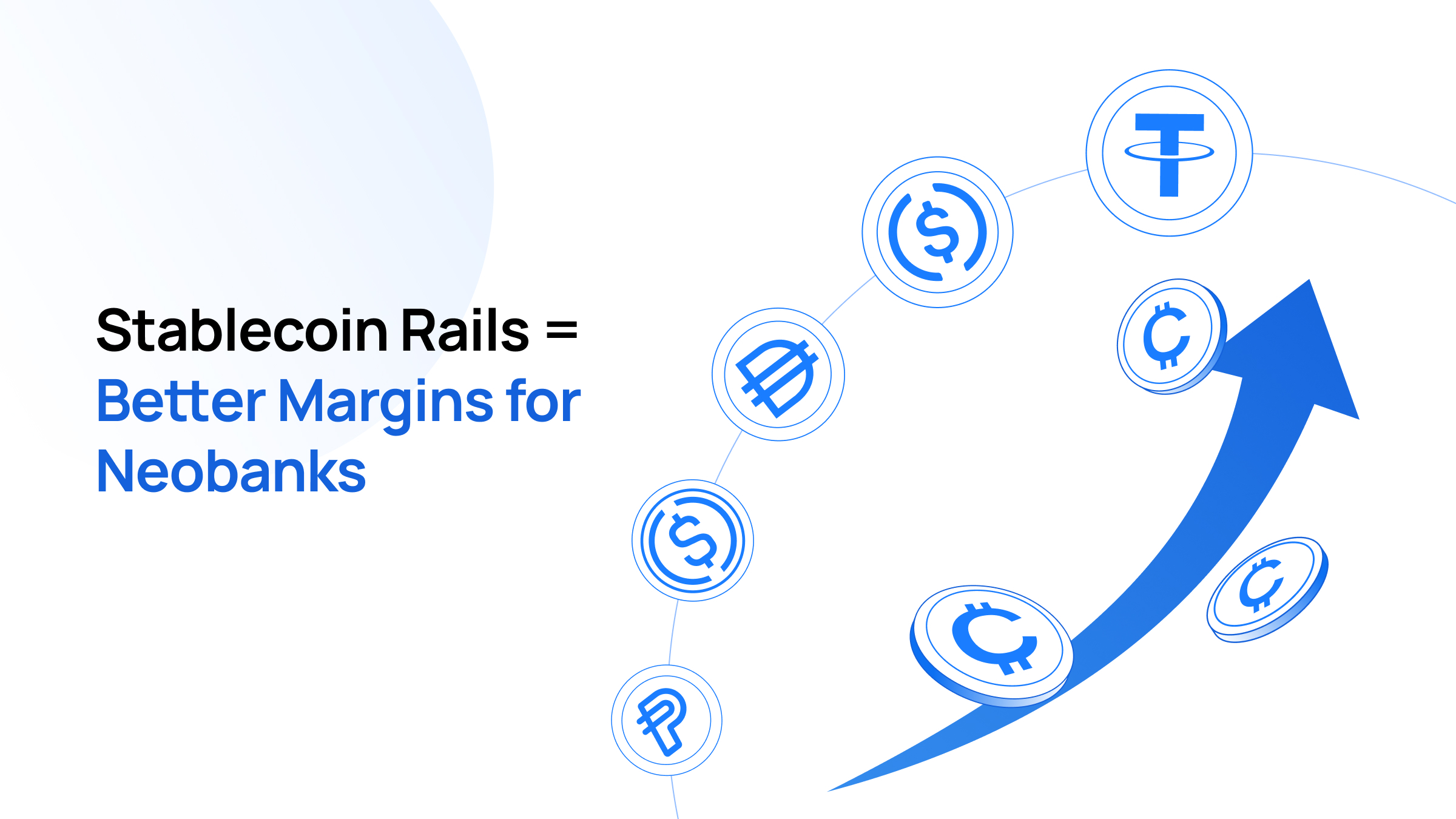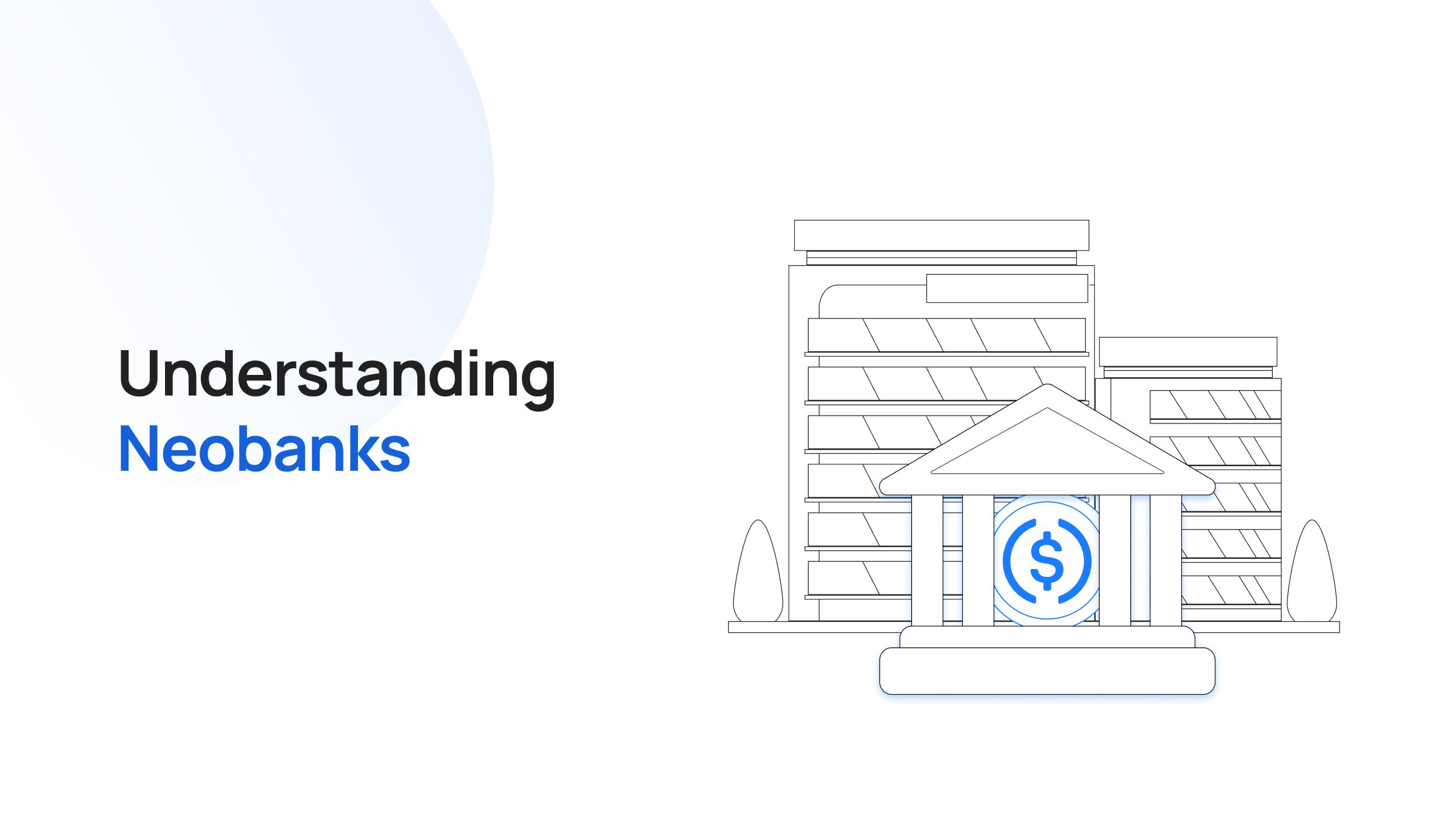Takeaways
- Enterprise-grade stablecoins must satisfy the requirements of multiple C-suite leaders.
- Key traits include full reserve backing, same-day redemption, strong licensing, multi-chain native issuance, and enterprise-grade custody and integration.
- Must have compliance features like freeze-on-demand, real-time sanctions screening, Travel Rule support, and transparent enforcement are.
- Real-world use cases range from cross-border settlements to always-on FX.
- “Fast and cheap” won’t cut it. Stability, regulatory clarity, interoperability, and auditability, too, determine enterprise adoption.
Stablecoins have started creeping into corporate finance workflows. What started as a crypto-native tool for traders to move fast between exchanges is now on the radar of CFOs, treasurers, and compliance teams at Fortune 500s.
But not all stablecoins are the same. And no, we’re not talking about stablecoin types based on what’s backing them – this is deeper than that.
The stablecoin that works for a retail user sending $50 to a friend will not cut it for a multinational moving $50 million across jurisdictions. Large enterprises operate under layers of regulatory oversight, with stringent treasury controls, complex ERP integrations, and zero tolerance for downtime or settlement risk. So, “fast and cheap” isn’t enough of a selling point for enterprises to start moving their billions using blockchain rails.
So, what makes a stablecoin truly “enterprise-grade”?
Also Read: Why FinTechs Are Turning To Stablecoins
What Different Enterprise Leaders Look For In A Stablecoin
Stablecoins have to be redeemable on demand, regulator-approved, operationally bulletproof, and fully auditable before they can be crowned “enterprise-grade.”
Importantly, an enterprise-grade stablecoin isn’t defined by a whitepaper. It’s defined by how well it can survive the scrutiny of every decision-maker in a corporate boardroom. Each C-suite leader has a different filter, and a stablecoin has to pass all of them to make it into production.
Also Read: How Transak Abstracts the Messy Middle of Stablecoin Payments
For CEO: Strategic Advantage Without Reputational Landmines
The primary question for a CEO would be, “Does this move the company forward?”
Stablecoins must offer a clear competitive edge (think faster market entry, reduced payment friction, new revenue models) without exposing the brand to regulatory or PR blowback. A single compliance slip can undo years of progress.
For CFO & Treasurer: Liquidity, Control, and Auditability
For finance leaders, it’s all about working capital efficiency and risk management. They want predictable redemption windows, transparent fees, multi-issuer redundancy, and a clear path for classifying holdings as cash or cash equivalents. If the auditors won’t sign off, it’s a non-starter.
For CTO: Security and Seamless Integration
Technology chiefs care less about “crypto” and more about uptime, API quality, and security architecture.
Can it plug into ERP, treasury, and payment systems with minimal friction? Is key management enterprise-grade (MPC, HSM, role-based access) with built-in disaster recovery?
For COO: Operational Resilience Across Borders
Operations leaders want a 24/7 system that works as well on Sunday morning in Jakarta as it does on Monday in New York. That means multiple on/off-ramps, failover chains, reconciliation-friendly transaction data, and a proven process for incident response.
For General Counsel & Compliance: Regulatory Cover and Control
Legal wants the coin to be on the right side of every rule in every jurisdiction where the business operates. That means the issuer is licensed, reserves are bankruptcy-remote, and AML/KYC tools meet or exceed banking standards. They also want a clear procedure for freezing or quarantining suspicious funds.
Core Traits of an Enterprise-Grade Stablecoin
Passing the C-suite test means a stablecoin has to meet a set of hard, non-negotiable standards. These aren’t mere “nice-to-haves.”
Also Read: The New Dollar Standard: How Stablecoins Are Becoming Global Money
1. Full Reserve Backing and Radical Transparency
An enterprise-grade stablecoin must be backed one-to-one with high-quality, short-duration assets (think T-bills, overnight repos, and insured bank deposits). Anything less invites liquidity risk.
- Proof matters: Monthly attestations or, ideally, quarterly independent audits.
- Bankruptcy-remote: Reserves held in structures that protect holders if the issuer collapses.
2. Reliable, Same-Day Redemption
It’s not “stable” if you can’t get the money out when you need it.
Enterprises need T+0 redemption SLAs, multiple redemption banks, and documented daily capacity to handle peak volumes.
3. Regulatory Clarity and Licensing
The issuer should operate under recognized financial licenses in the jurisdictions where you do business (e-money, trust company, or equivalent). This shields the enterprise from regulatory whiplash and makes internal sign-off easier.
4. Multi-Chain Native Issuance
An enterprise shouldn’t rely on wrapped tokens or bridges for core flows. Native issuance on at least two production-grade chains ensures resilience, better uptime, and a fallback if one network stalls or fees spike.
5. Enterprise-Grade Security and Custody
Keys should be managed with MPC or HSM, governed by role-based access, and backed by strong recovery procedures. Support for both self-custody and qualified custodians lets enterprises choose the right operational mix.
6. Programmability and Integration
It must plug into corporate systems without heroics. That means APIs, webhooks, and ISO 20022 mapping into ERP/TMS systems. Metadata-rich transactions enable automated reconciliation without endless manual matching.
7. Operational Resilience
No chain or issuer is perfect, but the stablecoin should have a proven uptime record, an incident response process, and tested failover plans. Gas abstraction, pre-funded wallets, and automated balance rebalancing all make daily operations smoother.
Compliance and Enforcement Readiness
For a stablecoin to be truly enterprise-grade, it can’t just move money fast, it has to move it clean. That means having the built-in ability to stop bad actors in their tracks without grinding legitimate business to a halt.
Also Read: What Is The GENIUS Act? A CEO’s Guide To The US Stablecoin Legislation
Freeze On Demand
Enterprises need assurance that if a wallet linked to a sanctions list pops up (OFAC, EU, UN, or local equivalents) the issuer can freeze those funds instantly. The best systems allow targeted freezes at the wallet or transaction level as opposed to blunt-force shutdowns.
Always-On Screening
It’s not enough to run a one-time check. Leading issuers plug into real-time sanctions feeds and KYT (Know Your Transaction) tools so every inbound and outbound flow is monitored for risk. Suspicious funds can be quarantined automatically while investigations run in parallel.
Travel Rule Ready
For cross-border flows, the coin should support secure VASP-to-VASP messaging to share sender and receiver details when required. That keeps you on the right side of FATF and local AML rules without slowing settlement.
Transparent Enforcement
Some issuers publish blacklists and enforcement stats so enterprises can see exactly how compliance actions are handled. This kind of reporting helps satisfy internal audit and regulatory inquiries before they even land on your desk.
Real-World Enterprise Use Cases
When a stablecoin meets enterprise-grade standards, it stops being a “crypto experiment” and starts acting like real financial infrastructure. The use cases are diverse, but they share one thing: speed, control, and cost-efficiency that traditional rails struggle to match.
1. Cross-Border Supplier Settlements
Global manufacturers can pay overseas suppliers in minutes instead of days, without tying up funds in pre-funded accounts. This reduces working capital drag and allows just-in-time inventory without liquidity bottlenecks.
2. Treasury Cash Pooling and Intercompany Transfers
Enterprises with subsidiaries across regions can consolidate idle balances instantly, even over weekends and holidays. Stablecoins act as an always-on corporate cash rail, replacing multiple correspondent bank hops with a single on-chain transfer.
3. Contractor and Workforce Payments
From freelance talent in emerging markets to gig economy payouts, stablecoins allow same-day payments in a currency that holds value against local inflation. Adding metadata to transactions means payroll systems can still reconcile automatically.
4. Customer Refunds and Disbursements
Airlines, insurers, and e-commerce platforms can issue instant refunds globally without waiting for card network reversals or incurring high wire fees. Funds can be programmed to expire or be restricted for specific merchants if needed.
5. Programmable Trade Finance and Escrow
Stablecoins can trigger payment release automatically when goods are scanned at a port or a milestone is met in a service contract. This reduces disputes, speeds up cash cycles, and removes layers of manual verification.
6. Always-On FX for Global Operations
Paired with stablecoins in other currencies, enterprises can create 24/7 FX liquidity pools to rebalance funds between currencies outside of banking hours, locking in rates instantly instead of waiting for the market to open.
How Transak Helps Enterprises Adopt Stablecoins
Even when a stablecoin meets every enterprise-grade requirement, integrating it into existing finance systems can be complex. Transak bridges this gap by providing compliant, multi-rail on/off-ramping globally, native issuance across major chains, and seamless integrations via APIs and SDKs.
Transak’s compliance-first infrastructure (covering AML/KYC, KYT, sanctions screening, and Travel Rule readiness) helps enterprises onboard stablecoins without adding regulatory risk, while high uptime and multi-network resilience keep operations running smoothly at scale.
Conclusion
In the end, the question for enterprises is not whether stablecoins will become part of their financial toolkit, but how quickly they can implement them without disrupting existing controls.
The winners in this shift will be the organizations that treat stablecoins as core infrastructure by integrating them into treasury, compliance, and operational systems with the same rigor applied to any mission-critical tool.
As the rails between traditional finance and blockchain tighten, enterprise-grade stablecoins will redefine the baseline for global liquidity, resilience, and financial interoperability.
Also Read: What is Embedded Finance? The Hidden Rails Powering Stablecoin Adoption






